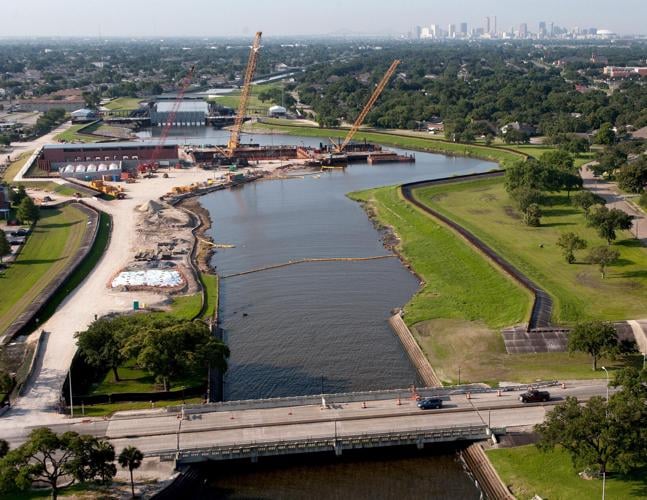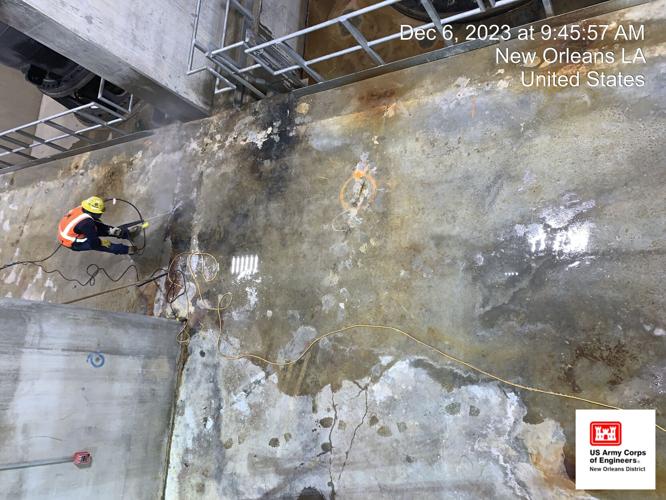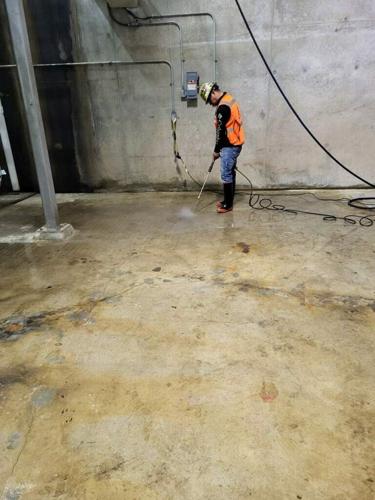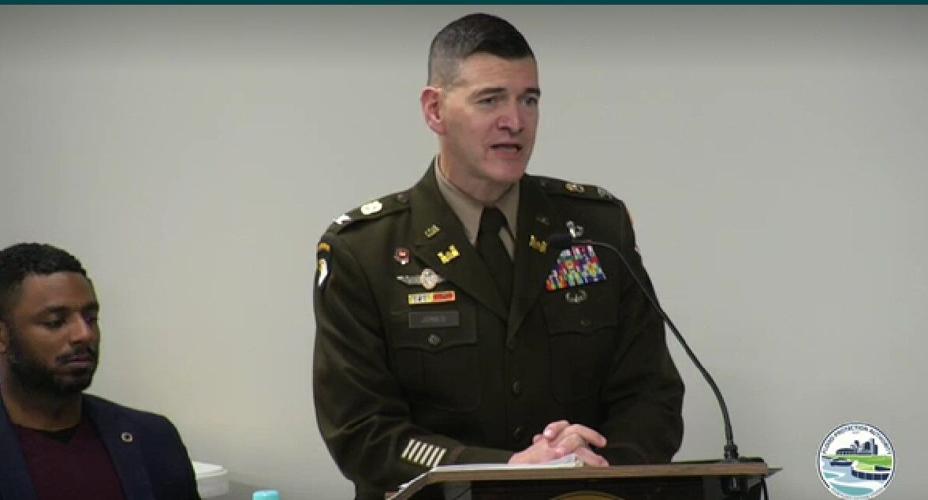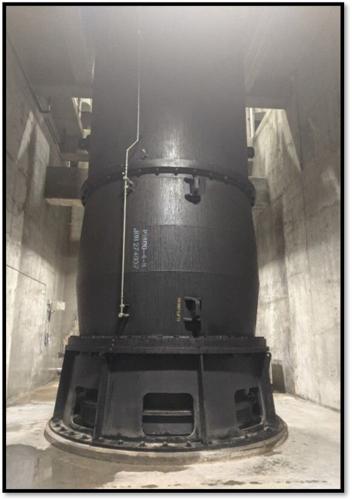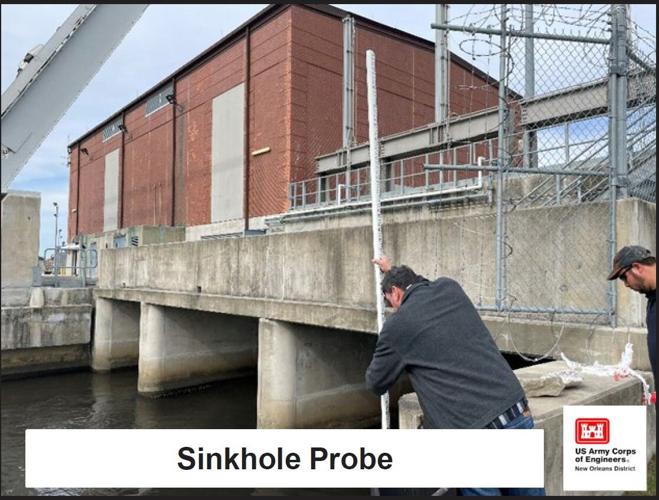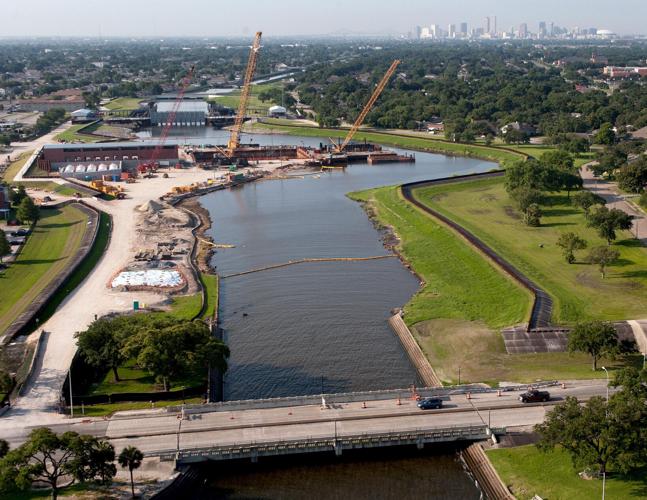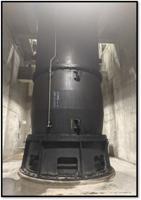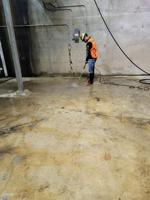Temporary repairs of corrosion in New Orleans lakefront hurricane protection pumps are expected to take another couple of years, but enough capacity will be in place to handle storm seasons in the meantime, the Corps of Engineers says.
Col. Cullen Jones, commander of the Corps’ New Orleans District office, briefed both the state Coastal Protection and Restoration Authority and the Southeast Louisiana Flood Protection Authority-East on the repairs at the stations at the ends of the 17th Street, Orleans Avenue and London Avenue drainage canals at recent meetings.
The 17 pumps are vital to New Orleans' $14.6 billion risk reduction system system installed after the catastrophic failures of levees and floodwalls during Hurricane Katrina. Corrosion has been detected within the pumps even though they were only completed in 2018.
Workers have been carrying out temporary repairs while the underlying cause of the corrosion is investigated. The pumps are only operated during tropical storms when gates in the stations are closed to prevent surge entering the canals, and are separate from those used for regular drainage by the city's Sewerage & Water Board.

Col. Cullen Jones, commander of the Army Corps of Engineers New Orleans District office, updates the Southeast Louisiana Flood Protection Authority board on repairs at the three lakefront Permanent Canal Closure and Pump Stations on Dec. 21. (Flood Protection Authority)
The investigation is being conducted by the Corps and PCCP JV, the contractor who built the pump stations for $726 million.
The combined pump stations and storm surge gates were added at the ends of the city's main rainfall drainage canals in the aftermath of Katrina. During that storm, surge from Lake Pontchartrain forced a portion of the floodwall along the east side of the 17th Street Canal out about 35 feet, resulting in the flooding of Lakeview and Mid-City.
Surge in the Orleans Avenue Canal flowed through an incomplete segment of the east side floodwall into City Park.
At London Avenue, the weight of surge water forced through sediment in the bottom of the canal and tunneled beneath sections of both the east and west side floodwalls, causing them to fail and flooding portions of Gentilly, Desire, Pontchartrain Park and adjacent neighborhoods.
The three new stations were built under a design-build contract awarded to the PCCP joint venture, which includes Kiewit Louisiana Co., whose parent headquarters is in Omaha, Nebraska; Traylor Bros. Inc., based in Evansville, Indiana; and the M.R. Pittman group, located in St. Rose. The pump manufacturer was Patterson Pump, based in Georgia.
The corrosion issue was initially identified as part of an investigation into overheating at the London Avenue station in July 2021.
New pump was installed at the London Avenue Permanent Canal Closure and Pump Station in advance of the June 1, 2023, beginning of hurricane se…
The Corps inspected all 17 pumps in the three stations and found corrosion in several of them. The London Avenue pump was replaced, and repairs have been ongoing to deal with corrosion at the other pumps since then. Before the replacement of the London Avenue pump, temporary pumps were installed there as a precaution.
On Dec. 18, workers dewatered a pump at the 17th Street Canal station to determine the cause of corrosion there. That pump is expected to be disassembled at the beginning of January by PCCP JV workers, who will conduct any needed repairs.
Another five to eight pumps will be reviewed through June 1, 2024, the beginning of the next hurricane season. The remainder of the pumps will be reviewed following the end of the 2024 hurricane season, between December 2024 and June 2025.
The workers also will ensure that all pumps work during the 2024 hurricane season, Jones said.
A worker prepares concrete floor for repair of basement cracks at the London Avenue Permanent Canal Closure and Pump Station. (Army Corps of E…
On a parallel track, the Corps, the contractor, and both the coastal and levee authorities have been meeting to identify “long-term correction actions” to assure the pump stations remain workable during their expected 35-year design lives, Jones said.
That process could last beyond the completion of the temporary repairs, Corps officials have said.

A worker probes a sinkhole found adjacent to the Orleans Avenue Permanent Canal Closure and Pump Station. (Army Corps of Engineers)
Jones also revealed an investigation is underway of two other issues at the stations: cracks found in the basement at London Avenue, and sinkholes found adjacent to at least one of the three pump stations.
Neither of those new issues are considered threats to the stability of the stations, however, a Corps spokesperson said.
Cracks have been a problem in concrete in the basement of the London Avenue pump station since 2018, said Ricky Boyett, a Corps spokesperson. He said that while they’re not considered a structural threat, “there is some leakage in the floor that increases risk for workers.”
“To correct, we must make a u-shaped cut on the location of the crack, they apply a waterproof sealant to the concrete. This work does not have any impact on the operation of the pump station,” he said.
That work is expected to be completed by Feb. 1, Jones said.
The sinkhole investigation will include additional surveys at the stations to assure that the large buildings are settling -- slowly sinking into the soil beneath them -- as designed. That review will include inspections by divers in January or February.
Plans are to fill any holes by jet grouting, spraying denser material like concrete into the hole to assure additional sinking doesn't occur.

